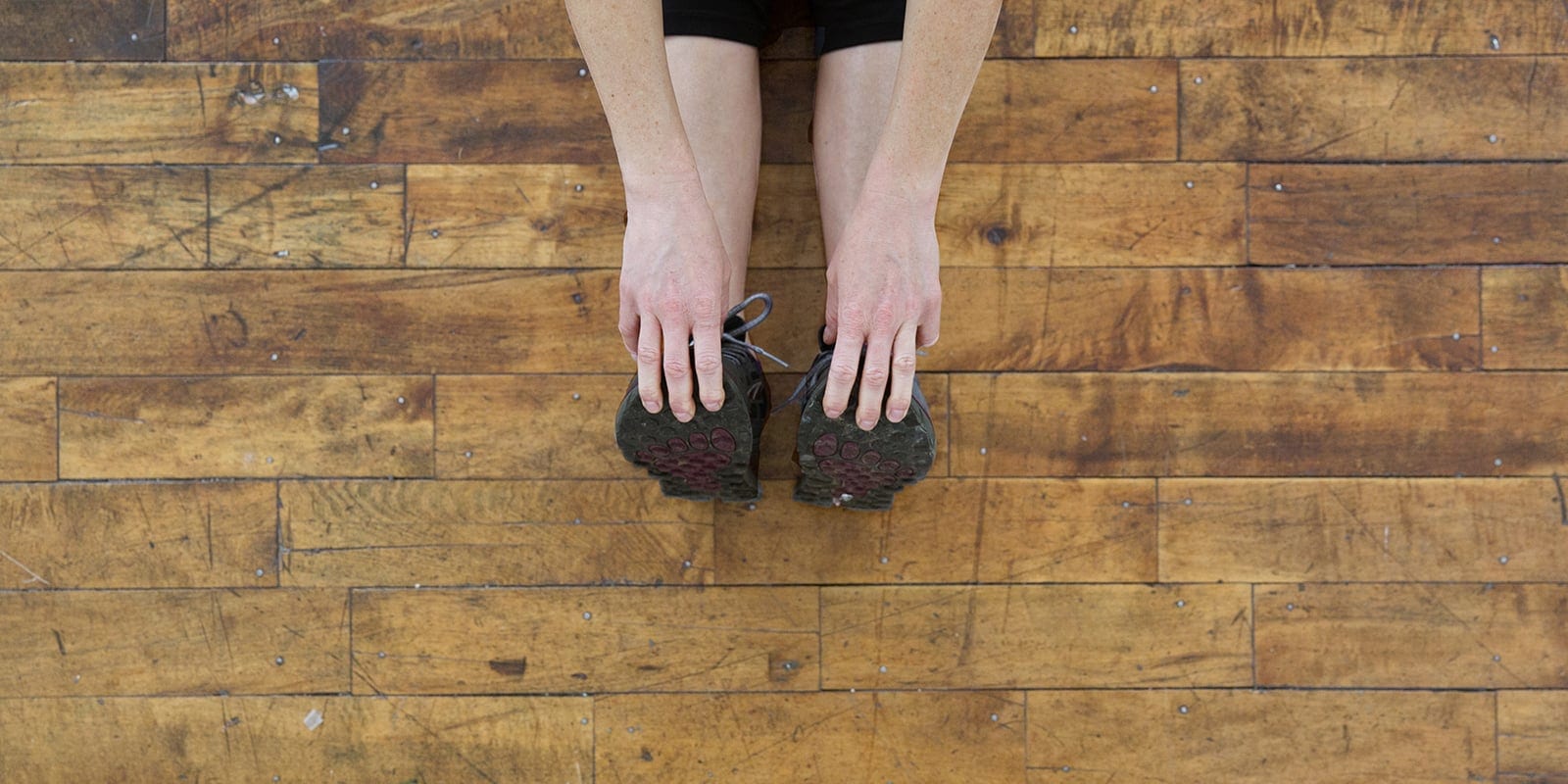Many of us were taught the basics of stretching as kids in gym class: You reach and hold a position to warm up and loosen muscles. Since then, there's been quite a bit of research done on the effectiveness of stretching and how to best treat your body before and after physical activity. Many experts now recommend a combination of dynamic stretching and static stretching. In this article, we look at:
- Dynamic stretching vs. static stretching: When and why you should use dynamic stretching and static stretching as part of your training.
- Stretches for running: Recommendations of specific dynamic and static stretches for runners.
Dynamic Stretching vs. Static Stretching
Dynamic stretching is active stretching (sometimes called functional stretching) that mimics the movements of running to increase your heart rate, raise your body temperature and warm up muscles and tendons in preparation for your run. You're always in motion while doing a dynamic stretching routine.
Static stretching, on the other hand, is the reach-and-hold style of stretching that's familiar to most of us. With static stretching, you typically hold a position for 30-60 seconds to lengthen and relax muscles. It's an effective way of increasing flexibility, improving range of motion and bringing relief to sore, cramped muscles.
When to Stretch
Do dynamic stretching before running: REI Outdoor School instructor Julia Zuniga recommends doing dynamic stretching to ready your muscles for running. Set aside five to 10 minutes before your run to do a dynamic stretching routine.
Save static stretching for after: Julia recommends saving static stretching, such as a sustained hamstring or calf stretch, for after exercise. Doing a routine of static stretches after running can help increase flexibility and bring relief to tight muscles.
Dynamic Stretches for Running
Here are five dynamic stretches that will rouse your running muscles:
1. High Knees (glutes, hip flexors, hamstrings)
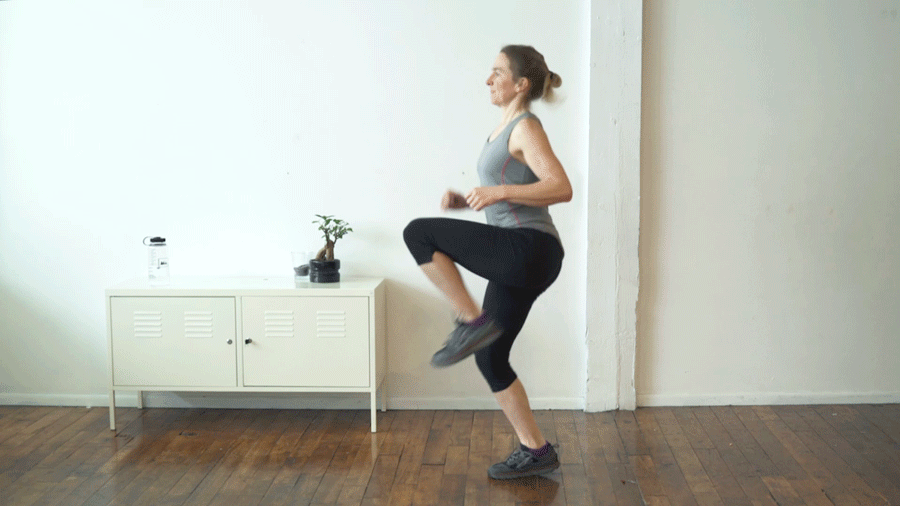
Jog in place while lifting your knees up to the level of your waist for about 30 seconds to one minute.
2. Butt Kicks (quads, hip flexors, hamstrings)

While either jogging in place or moving forward, kick your heels up toward your butt. Start slowly and gently to warm up your hamstrings. Do 10-12 reps on each side.
3. Skipping (calves, glutes, shoulders)

This is the same kind of skipping you did as a kid, but with a bit more power to propel your body up and forward. Swing your arms as you skip to warm up your shoulders. Pick a point about 15 yards away and skip down and back.
4. Leg Swings (glutes, calves, lower back, hamstrings)
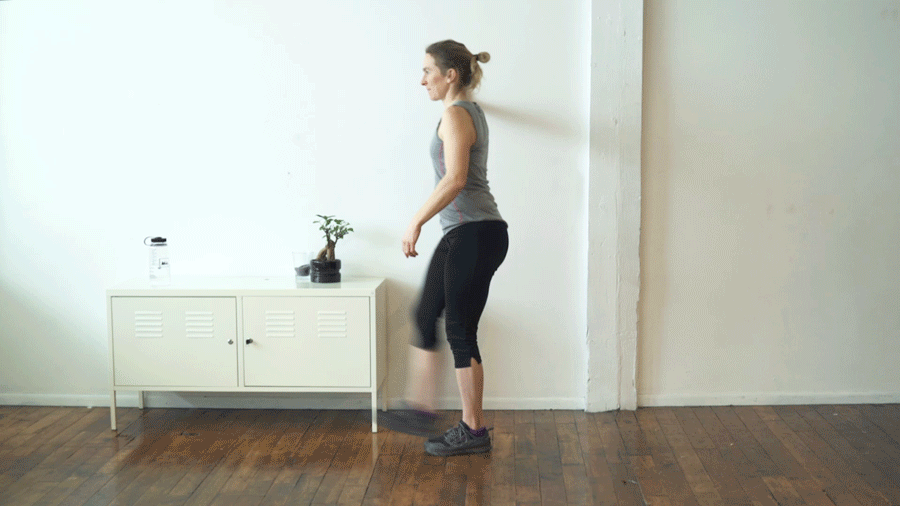
Extend your right arm out to your side to support yourself by holding onto a tree, railing or wall. Swing your right leg forward and back, keeping it as straight as you can. Engage your core and keep your trunk vertical as you move. Do 10 reps with the right leg, then turn around and do 10 reps with the left.
5. Arm Circles (shoulders)
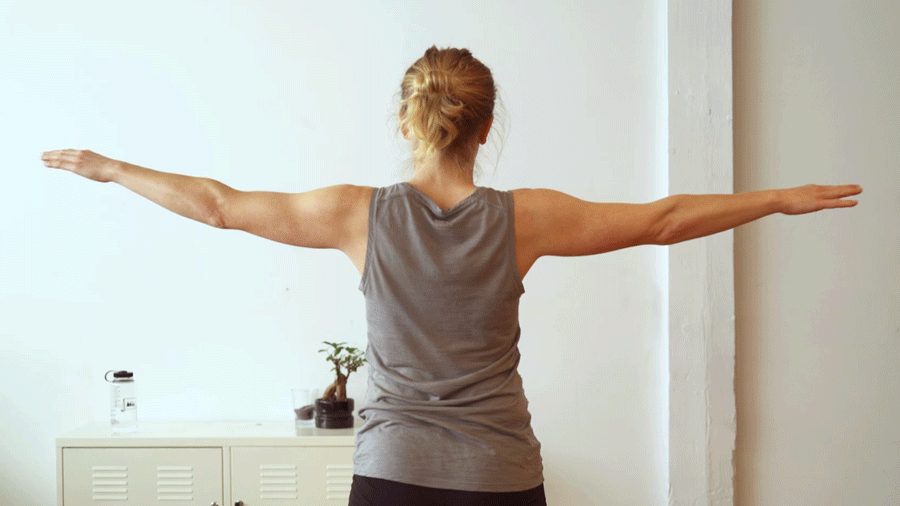
Start with your arms at shoulder height and pointed straight out to the side. With your palms facing down, move your arms in a circular motion like you're drawing 6-inch-diameter circles with your fingertips. Do 30 seconds forward and 30 seconds backward. This exercise will loosen up your shoulder muscles.
Static Stretches for Running
While performing static stretches, move slowly and smoothly and remember to breathe. Don't bounce, as that can overstretch a muscle and cause injury. It's OK to feel a deep stretch with some tension, but do not push so far that you feel pain.
1. Calf Stretch
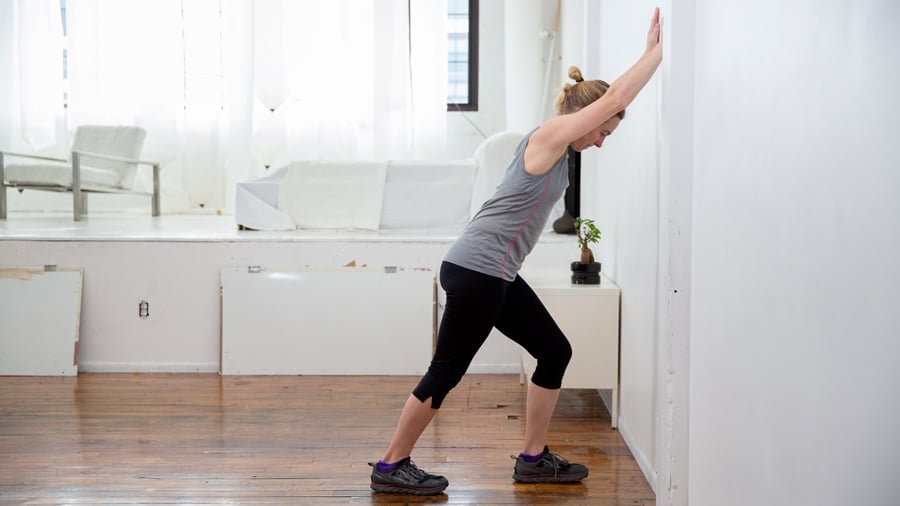
Running steeply uphill forces you to run more on the balls of your feet, which puts a serious strain on your calf muscles. Stand facing a wall and place your arms out in front of you with your hands against the wall. Place your left leg forward and bend the knee, while leaving your right leg extended straight back. Both feet should be flat on the floor. Lean toward the wall to stretch the calf muscle in your right leg. Hold for 30-60 seconds, then switch sides. Repeat three times. To progress the stretch, while stretching your calf, slightly bend your knee. This stretches the soleus muscle, part of the posterior complex of the lower leg. This modification can be held for 30-60 seconds and repeated three times.
2. Hamstring Stretch
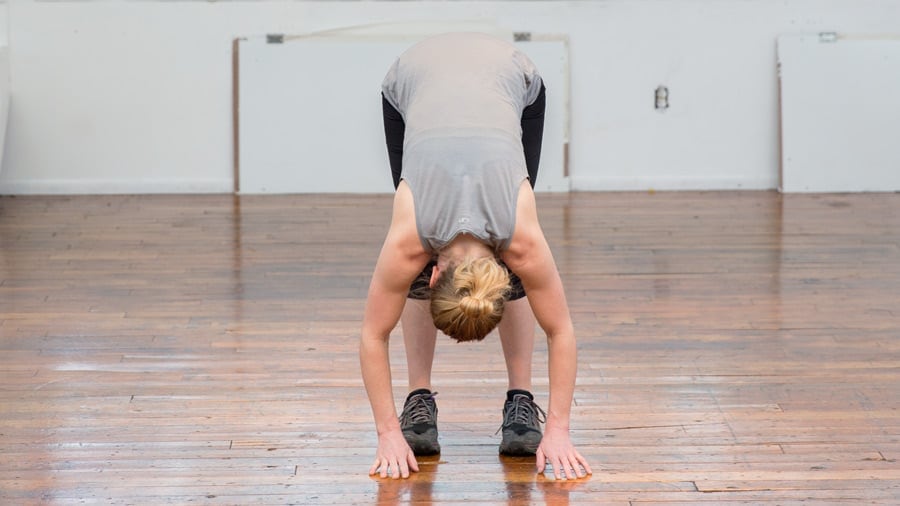
You can do a simple hamstring stretch where you stand with your feet together and fold forward at the waist to touch your toes with your hands. For a slightly different stretch, spread your legs a few feet apart and fold at the waist, trying to touch the floor with your fingers. Think about keeping your core engaged and avoid rounding your back. Hold both stretches for 30-60 seconds. Repeat three times.
3. Quad Stretch

You derive a lot of your running power from your quads so it's important to stretch them out after a run. Stand on your left leg and bring your right heel up toward your butt. Grab your right ankle with your right hand and gently pull your foot up and in. Avoid torquing your knee. Hold for 30-60 seconds, then switch sides. Repeat three times.
4. Runner's Lunge (hip flexors)
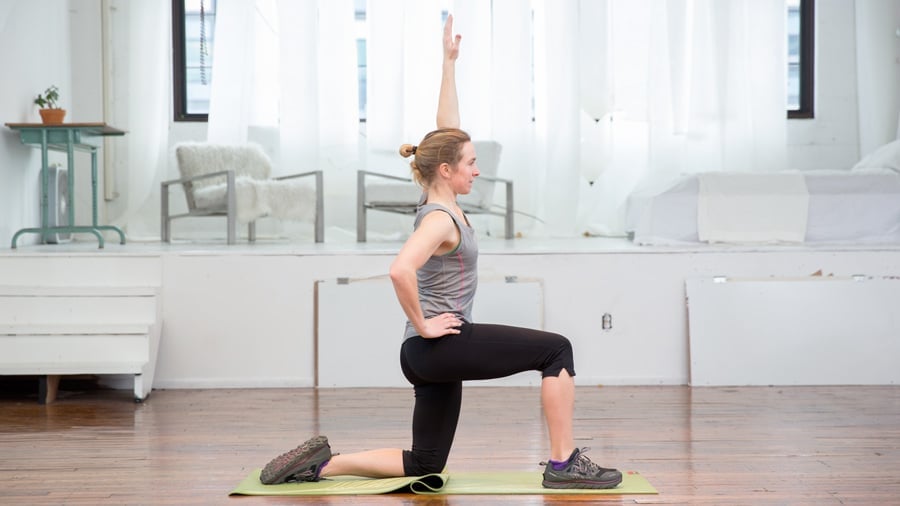
Running hills and hopping over sidewalk curbs can give your hip flexors a serious workout. Kneel on your left knee and place your right foot on the floor in front of you so the bend in your knee makes a 90-degree angle. Lean forward until you feel a stretch in the front of your left hip. You can use your arms to help maintain balance or place both hands on your right knee. Hold for 30-60 seconds, then switch sides. Repeat three times.
5. Reclined Figure-Four Stretch (gluteus medius)
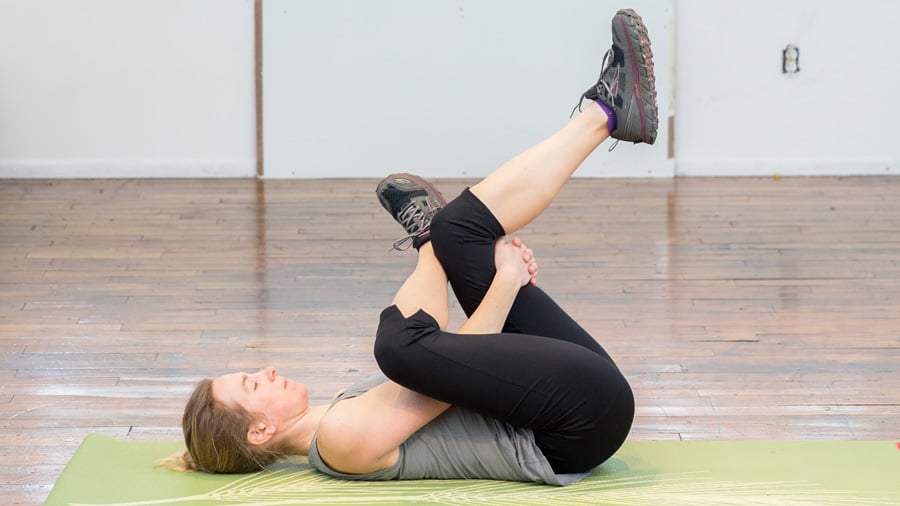
Moving from side-to-side to avoid breaks in the pavement or rocks and roots on the trail can give you tight and sore glutes. To stretch your glutes, lie down on your back in the figure-four position so that your right foot is pressed against your left knee. Interlock your fingers on your left knee and pull in toward your chest to stretch your right glute. Hold for 30-60 seconds, then switch sides. Repeat three times.
6. Iliotibial Band Stretch
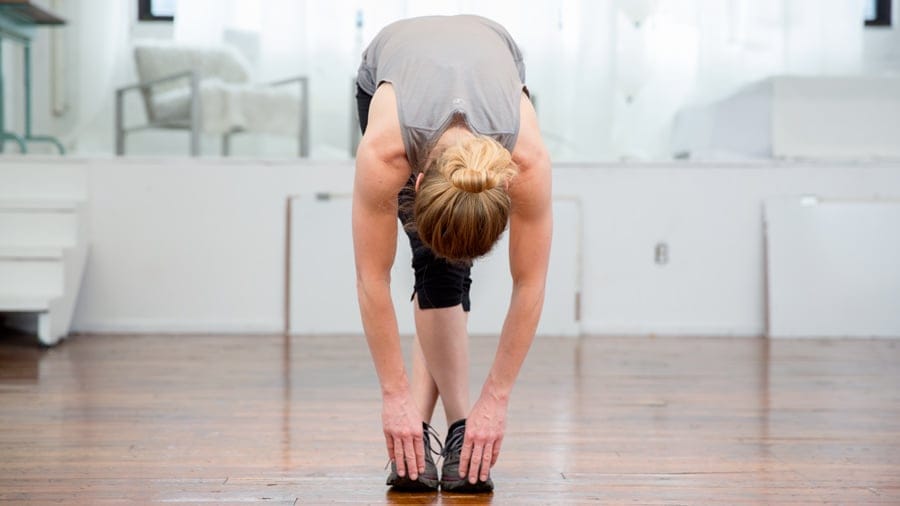
Commonly called "runner's knee," a tight IT band can cause pain and tenderness along the outside of the knee. Cross your right foot over your left and fold forward at the hips to touch your toes with your fingers. While in this position, try to push your feet closer together without actually moving them. You should feel the stretch along the outside of your left leg. Hold for 30-60 seconds, then switch sides. Repeat three times.
